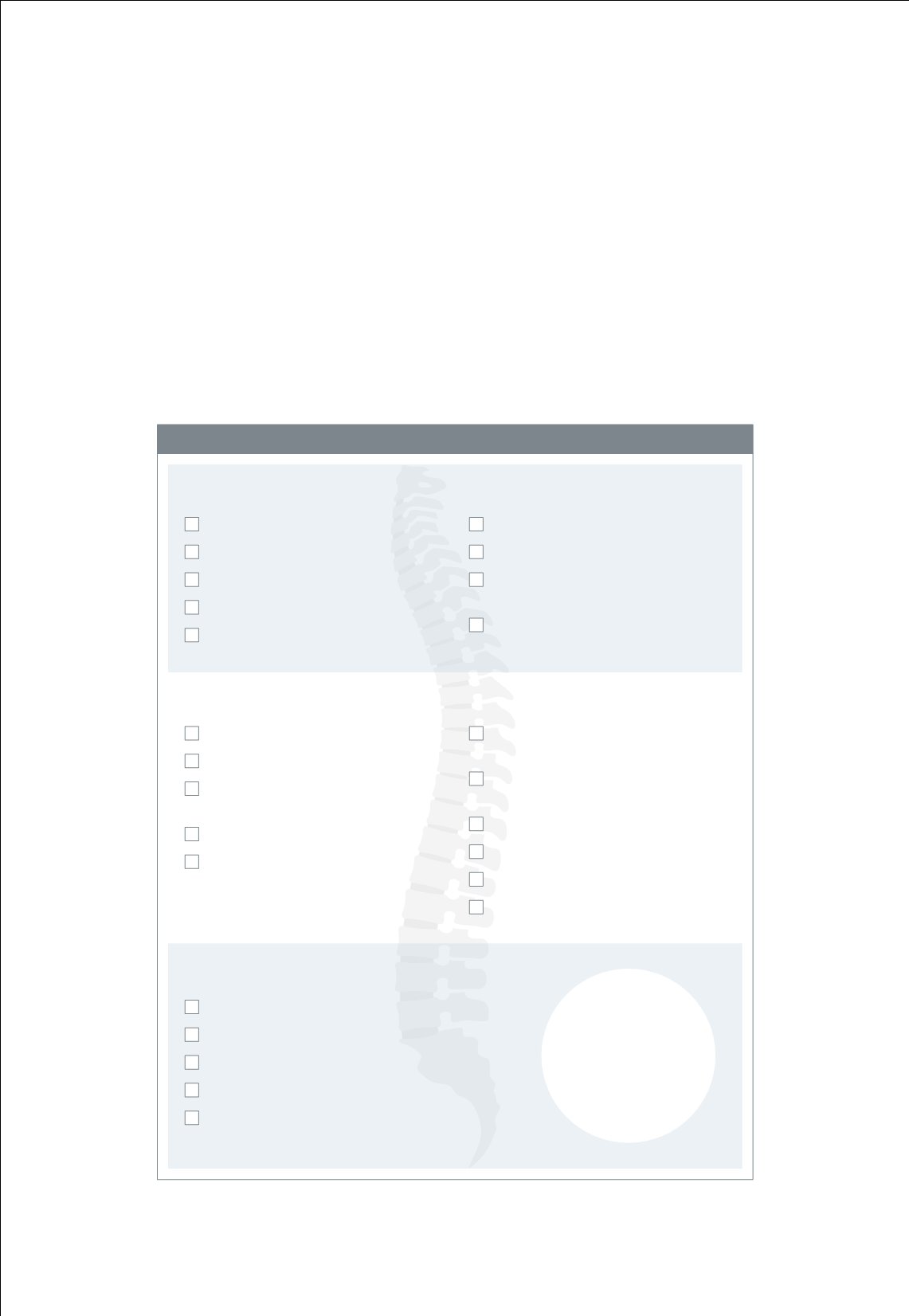
Engaging patients and families
As part of Texas Children’s patient- and family-centered care model, caregivers are
encouraged to include the patients and their families in decisions regarding patient care
and to educate them in all aspects of care. For example, the acute care pediatric surgical
unit designed a spinal poster to create a clear understanding of postoperative care,
which improved communication with families and their understanding of the care being
provided. The posters include patient goals, which they can track as they overcome certain
challenges. The posters also help alleviate some of the anxiety following surgery by making
sure patients feel like they are a part of the decisions being made each day about their
plan of care.
NIGHT OF SURGERY
Sit at edge of bed with assistance
Stand at bedside with assistance
Turn every two hours
Start breathing exercises
Sips of water or ice chips
POST-OPERATIVE DAY 2
Walk and sit four times
Turn every two hours
Breathing exercises 10 times every
hour while awake
Start eating light meals
Make discharge appointment
POST-OPERATIVE DAY 4+
Shower
Pain controlled with pills
Walk to restroom
Tolerating regular foods
Self-turning and getting out of
bed alone
POST-OPERATIVE DAY 1
Walk and sit four times
Turn every two hours
Breathing exercises 10 times every
hour while awake
Drink and advance to bites of food
POST-OPERATIVE DAY 3
Walk and sit at least four times with
parental assistance
Turn self and get out of bed with
parental assistance
Dressing change
Foley catheter removed
IV fluids stopped
Switch to oral pain medicine
TH I S I S TO B E
US ED A S A GU I DE
AND MAY CHANGE
ACCORD I NG TO
DOCTOR ’ S ORDE R S
AND PAT I ENT
COND I T I ON
S P I N A L P O S T E R
S P I N A L I N S T R U M E N TAT I ON R E C OV E RY G OA L S
N U R S I N G O U T C O M E S
2 0 1 3
|
T E X A S C H I L D R E N ’ S H O S P I T A L
3 3


